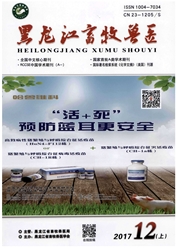

 中文摘要:
中文摘要:
为研究H9N2亚型禽流感病毒毒株对禽类致病性的分子致病机制,选用A/chicken/Shandong/818/2010和A/chicken/Shandong/196/2011两株致病力存在明显差异的野生型H9N2亚型禽流感病毒,用RT-PCR扩增其全基因组序列,并将其全部克隆于PHW2000双向转录/表达载体。经测序验证后,将其转入293T细胞,并拯救出2株具有血凝活性的毒株。对拯救毒株进行全基因组测序验证后,结果表明拯救出的毒株与2株野生型病毒的核苷酸序列完全一致;体外试验证明,拯救毒株与野生毒株在鸡胚和细胞中的复制能力一致;动物试验证明,拯救毒株保持了野生型毒株对鸡和鸡胚的致病力。这两套反向遗传操作系统的构建,研究了病毒变异规律,发现了可能导致H9N2亚型禽流感病毒增强的关键氨基酸位点,为流感的监测及预防提供依据。
 英文摘要:
英文摘要:
In order to obtain two stains of rescued H9N2 viruses,which showed different virulences to chickens,two sets of eight plasmid system were established. The rescued virus was generated by reserve genetic technique. The full genome of rescued virus was sequenced, and the results showed the rescued virus carried 100% homogeny whth their wild type. The in vitro experiment indicated the rescued virus carried identical replication ability in chicken embryos and MDCK celsl. The animal experiment in vivo showed the virus maintained the same pathogenicity to embryos and SPF chickens. The above experiments proved the reverse genetic operating systems were established, which laid a solid foundation for researching the molecular mechanism of pathogenicity of H9N2 influenza virus.
 同期刊论文项目
同期刊论文项目
 同项目期刊论文
同项目期刊论文
 期刊信息
期刊信息
